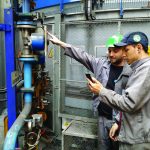The last thing a wind technician wants to haul up a turbine is a heavy, cumbersome torque wrench to repair a hydraulic actuator out in the hub. But that’s exactly what occurs often to complete the job several times a year, unless one uses a torque multiplier. This tool, which is lighter and easier to maneuver, works just as well as a traditional torque wrench to make repairs on systems such as hydraulic actuators.
Given the challenges of working in the wind industry — such as being several hundred feet off the ground and operating in tight, confined workspaces — having the right tools is critical to completing a job safely and efficiently. Fortunately, advances in the design of torque tools and tethering devices are giving technicians a helping hand when it comes to maintenance. While these innovations will never replace the deep mechanical aptitude of savvy technicians, it can make them more proficient — and that benefits everyone.
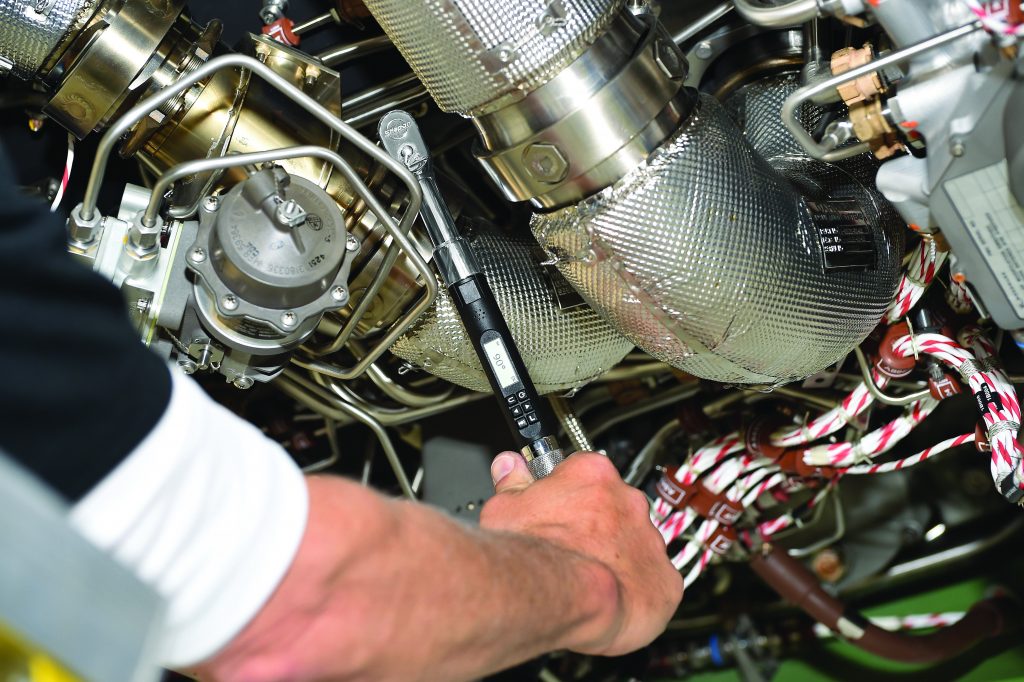
Torque in Action
One of the more demanding jobs is repairing hydraulic actuators in the hub, which is a component that connects the three blades to the main shaft and the rest of the drive train. Formerly, the maintenance team would carry up a large hydraulic torque wrench and related accessories to remove the head seal of the actuator. But that job has been made easier, thanks to a torque multiplier.
“Anywhere there’s a high torque, confined-space situation, a torque multiplier should be close at hand,” said Mark Edmunds, product manager at Snap-on Industrial. “Not only will a torque multiplier help make sure your fasteners are properly tightened, but it will help improve a technician’s efficiency — two things that add up to increased productivity.”
Torque multipliers are particularly useful on wind farms or other remote jobsites, as they don’t require electrical or pneumatic power sources. Designed for extreme duty, they deliver very high torque output, making them well suited for two- to three-inch bolt diameter applications. Generally, a torque multiplier is ideal when a prescribed amount of torque must be applied to threaded fasteners having a diameter of one or more inches, and/or when fasteners must be accurately tightened in a work space that precludes the use of a torque wrench with a long arm length.
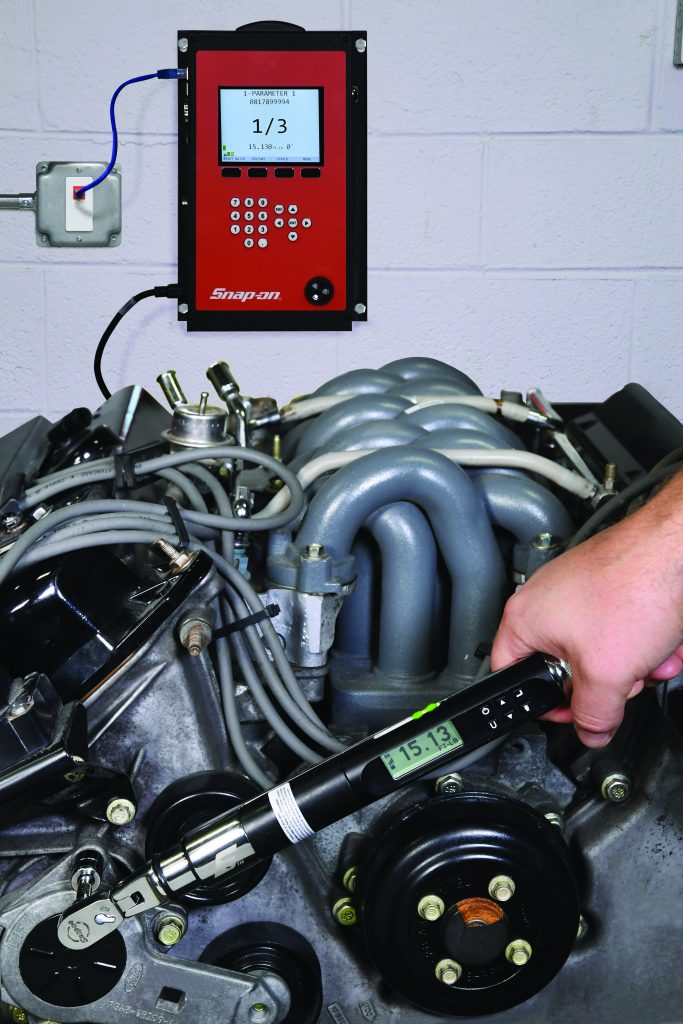
Edmunds said torque multipliers are ideal for extracting the ram and inspecting the bore of a hydraulic actuator. He added that using a multiplier saves time from carrying quite a few tool bags up the tower, and from a safety standpoint, it eliminates the need of running a high-pressure hydraulic unit in order to remove the head seal on the actuator.
For smaller torque applications, some companies have begun using 1/4”-, 3/8”-, and 1/2”-drive electronic torque wrenches. While electronic torque tools are gaining in popularity, mechanical torque wrenches are still popular in wind power because they are relatively inexpensive, and it’s the style that many technicians grew up with. Mechanical wrenches represent an older technology, but they still perform well if the technician uses the tool correctly, stores it properly, and keeps it accurately calibrated.
According to Edmunds, electronic torque wrenches tend to offer greater accuracy than mechanical models. The chance of over-torqueing is reduced with electronic wrenches, as illuminating LEDs provide operational guidance, signaling the user that he or she is approaching the targeted torque.
Data collection is another benefit of electronic torque wrenches. For each use, instant data on the exact torque applied is displayed and stored, which can be downloaded and analyzed for tracking and auditing purposes. These wrenches come with built-in calibration factors for different head lengths and adapters, and also alert the user when the wrench is due for calibration based on pre-set date and cycle count reminders.
Proper Use
It’s difficult to obtain accurate results from either a mechanical or electronic model if the tool isn’t properly used. That’s why correct hand position on the wrench is critical.
Edmunds points out that your hand should fit squarely on the steel or plastic-covered handle. Positioning your hand on any other part of the wrench, or even just off-centered on the handle, can lead to injury and result in a false torque reading. If two hands need to be used, place one hand on top of the other. The length of a torque wrench is designed and calibrated in such a way that your hand(s) need to be properly positioned on the handle during use. Changing the location of your hand negatively affects the tool’s performance.
Other tips for safe torque wrench use include:
• Wear safety glasses.
• Always pull rather than push the wrench when applying torque.
• Never use sockets that are worn or showing signs of cracking or fatigue.
• Ensure fasteners and bolts are well cleaned and dry (thread condition actually changes the amount of torque required to achieve proper fastener tension and clamping force).
• Avoid using accessories or handle extensions unless specifically allowed by the torque wrench manufacturer.
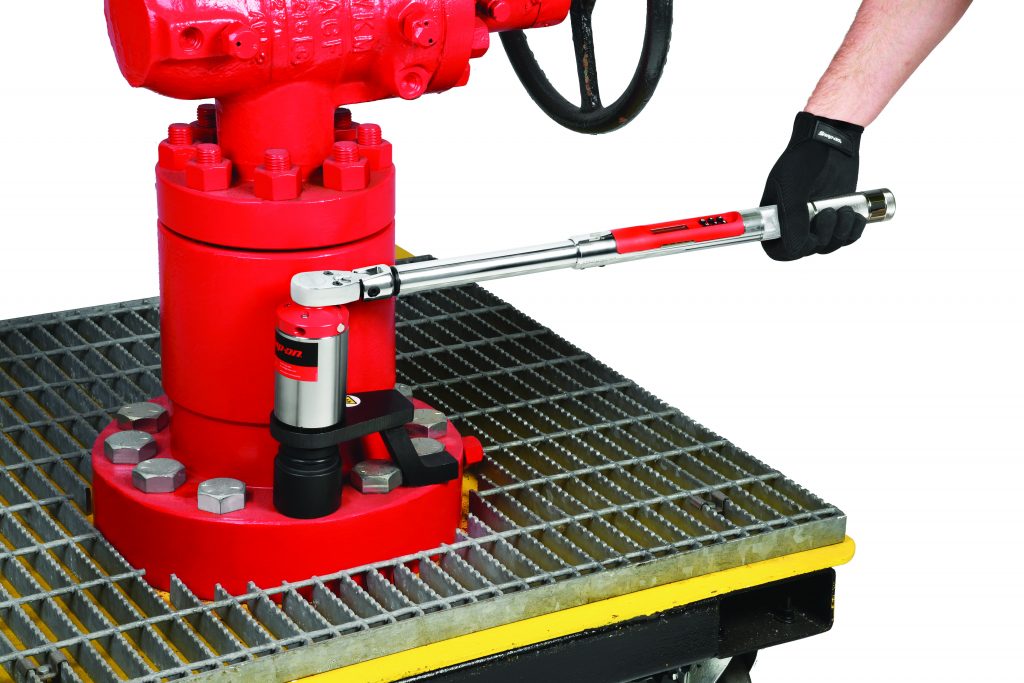
Some tooling manufacturers offer torque training to technicians and students to become certified in all things torque. These training seminars cover understanding torque theory; learning the proper procedures for applying torque; identifying bolt hardness and metal grades/thread pitch; fastener lubrication; appropriate safety measures; and selecting the right tool for the job. Reputable manufacturers host these seminars on their customers’ jobsites, while many technical schools offer them as part of their training programs.
Tethered Tools
Technicians working 300 feet in the air certainly know the importance of properly tethering tools, as one dropped object can have deadly consequences. According to the Bureau of Labor Statistics, 237 people were killed by falling objects or equipment in 2017.
Furthermore, the BLS reports that being struck by a falling object is the third leading cause of workplace fatalities, yet many of these accidents are completely preventable.
Tethering devices come in many shapes and sizes, but many fall short for one reason or another. Some mount in a way that limits the full use of the tool, is difficult to handle, and is an obstruction. Other tethers are only attached to some of the components of the tools, leaving other parts unsecured. Edmunds said the most common complaint of tethered devices is that they inhibit the functionality of the tool. A tool can be tethered, but if a technician refuses to use the device because it’s too cumbersome, then the design fails, and the objective of a safer working environment is not reached.
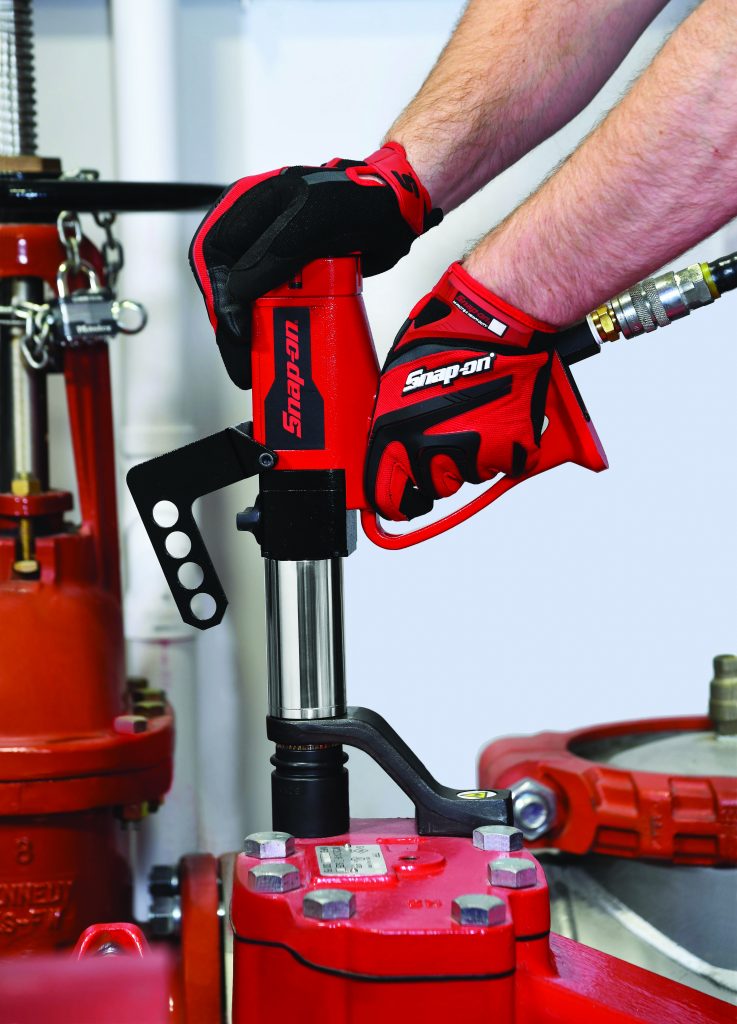
In examining ways to make drop prevention systems better for technicians, Edmunds said the industry has studied the most common occurrence of tool drops — the transfer of a tool between storage and use. More than half of drop incidents occur during this frequent action. With most systems, in order to secure a tool, the technician must first retrieve it and then clip or attach it to a lanyard. This process involves both hands and creates the potential for dropped tools as the technician transfers the tool from one hand to another and/or incorrectly attaches the tether.
To address this concern, Edmunds said Snap-on Industrial has developed Tools@Height; a tethering system that eliminates the additional actions normally required to secure tools. An example is a tool belt in which each tool has its own pouch or holster with a tethering device already installed. This enables the technician to simply remove the tool, use it, and put it back into its place on the belt — all with one hand. Since every tool is already independently tethered, no device needs to be attached, which can reduce transfer-related issues and resultant drops.
An additional benefit of the Tools@Height system is the reduction of the potential for accidental falls. Safety experts agree that, to minimize such accidents, technicians working at height should maintain three points of contact: two feet on a platform and one hand on a secured infrastructure. However, when using both hands to handle tools and attach them to a tethering device, the technician loses one point of contact. The Tools@Height system allows technicians to access and use their tools while maintaining the recommended “three points” position.
New designs in torque and tethered tools are bringing about more productivity and a higher level of safety to wind farms. Today, there are more than 1,000 tools available with engineered tether points for drop prevention. By design, the systems do not interfere with functionality or productivity. As tool drop prevention systems continue to evolve, productivity and efficiencies will increase. Safety is the No. 1 objective on all wind farms, and eliminating dropped tools goes a long way toward achieving a safe work environment.























